Are you planning a trip to China and wondering what to eat there? Our guest blogger, who taught English in Shanghai, shares five delicious foods to eat in China. Though their names may sound familiar, we still think you should try these authentic and famous Chinese dishes.
Do you enjoy traveling to taste local cuisines around the world? If so, check out more of our Foods Around the World series. We have local food guides for France, Ireland, Japan, the Maldives, Pakistan, Singapore, the United Arab Emirates, and Latin America.
Disclosure: This post about five foods to try in China contains some affiliate links. When you make a purchase from one of these links, we may earn a small commission.
Famous Foods to Eat in China
Whenever I have had a long day, I typically order my favorite dishes at a Chinese restaurant.
Chinese food is known to be one of the most comforting foods in the world. When I spent a couple of years in China as an ESL teacher, I learned a lot about Chinese culture and tasted the best food I think every single traveler should not miss.
I would teach all day in Shanghai, have fun with my Chinese students, and cap it off with a freshly cooked plate or bowl of goodness. I swear it made the whole day’s work worth it.
If you are traveling to China and want to know which foods you must try, you have landed on the right page. Let me share five foods I would travel to China to eat again.
Dumplings

Dumplings have been around for nearly two thousand years. In fact, the Chinese say the dumpling was first invented around 225 AD. This food has witnessed China’s history and has become a part of it.
There are several types of Chinese dumplings. Among the most common are guo tie, also known as potstickers, and wontons, both originating from northern China. At dim sum restaurants in Hong Kong and Guangzhou, you’ll find Cantonese dumplings like siu mai. There are also various steamed, stuffed buns called baozi or bao buns.
Among the oldest traditional Chinese dumplings are jiaozi. According to legend, a Chinese physician found villagers suffering from frostbite when he returned home during the Han Dynasty, and he saved the ailing villagers by feeding them a remedy of boiled dough filled with mutton, medicinal herbs, and chili.
Traditional dumplings were typically made of minced pork and finely chopped vegetables wrapped in dough. However, there are other variations nowadays. Instead of the traditional pork, Chinese dumplings may be filled with beef, chicken, or vegetables.
These dumplings are usually steamed, boiled, or fried, and I would say that my personal favorite is a steamed dumpling. Nothing spells authentic Chinese food like eating a hot steamed dumpling.
Sweet and Sour Pork
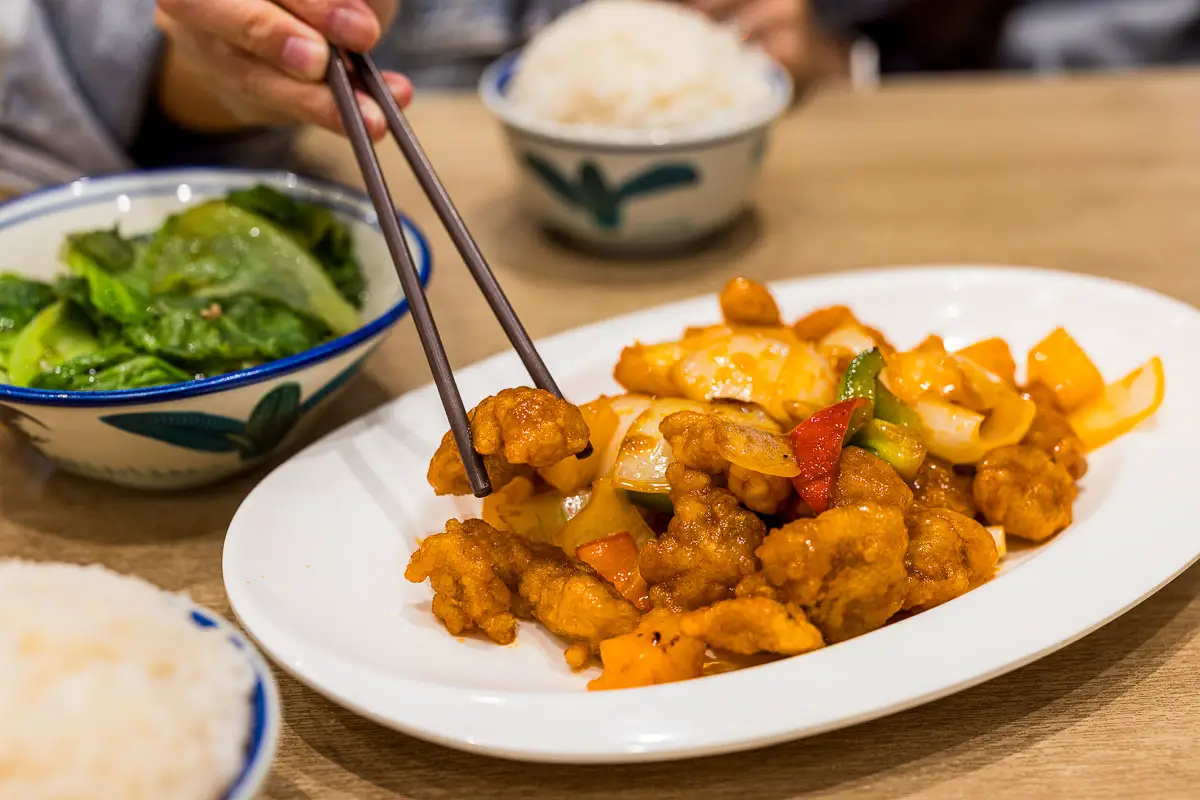
Sweet and sour pork, known as gu lao rou or goo lo yok, is a Cantonese dish that has become popularized at Chinese restaurants throughout the West, particularly in the United States.
You have likely eaten a variation of sweet-and-sour pork at your local Chinese restaurant; if you visit Guangdong in Southern China, you must taste an authentic version.
This dish is traditionally made of marinated, deep-fried pork, pineapple chunks, and bell peppers sautéed in a red sauce that tastes exactly as it sounds — sweet and sour.
Just like the dumplings, there are variations to this dish to cater to those who don’t eat pork. You will also see sweet and sour chicken, fish, and tofu.
Spring Rolls
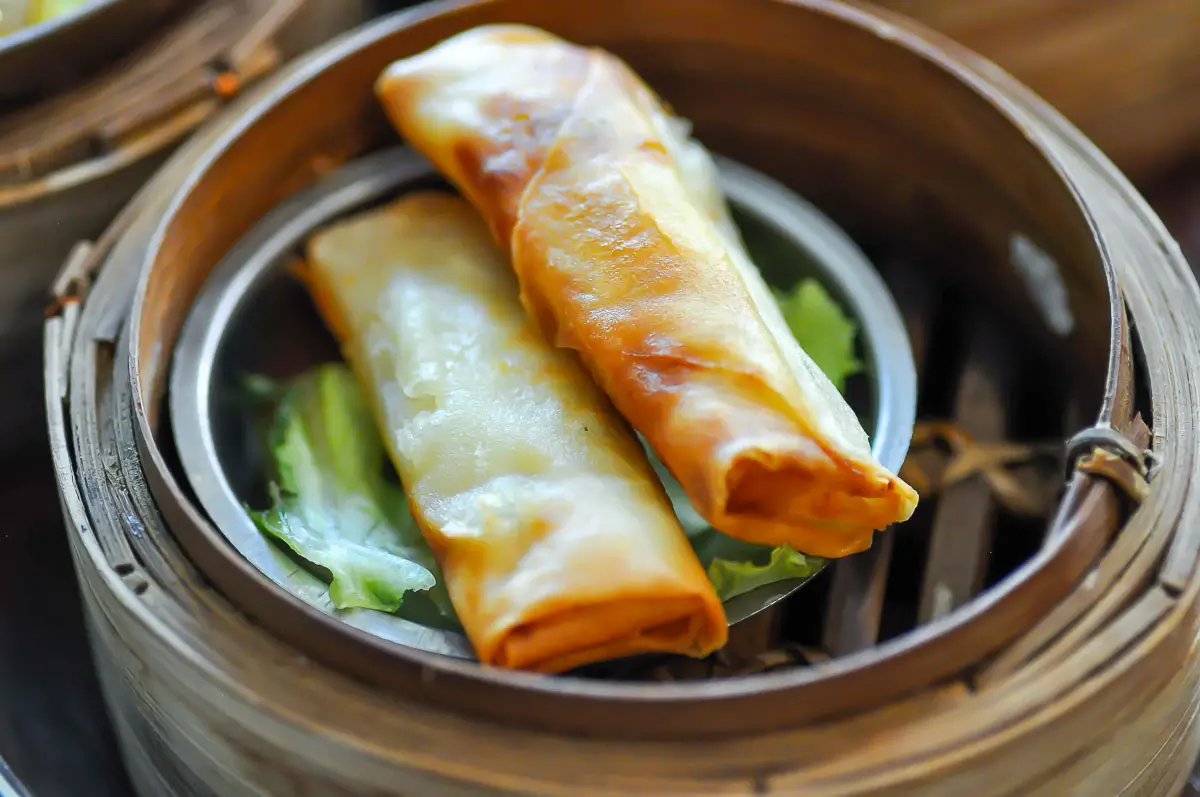
Originating in China during the Tang Dynasty as thin pancakes with carrots, celery, and perhaps other veggies, bean sprouts, vermicelli, eggs, or sauces, spring rolls were eaten and presented to friends and family in celebration of the beginning of spring. Today, spring rolls represent wealth and are considered lucky Chinese New Year foods.
One of the things I like about this food is that you can snack on it with a sweet and spicy red sauce or pair it with rice, which is a staple food in China. Like the dumpling, spring rolls today may be made of finely chopped vegetables and minced meat, which could be a variation of pork, chicken, or beef.
In Chengdu, home of the Giant Panda, steamed spring rolls are filled with cold veggies, sliced pork, chili powder, crushed peanuts, paprika, vinegar, soy sauce, or sesame seeds. Fried spring rolls are more common in Hong Kong and Macau, where you may go for dim sum or yum cha.
Peking Duck
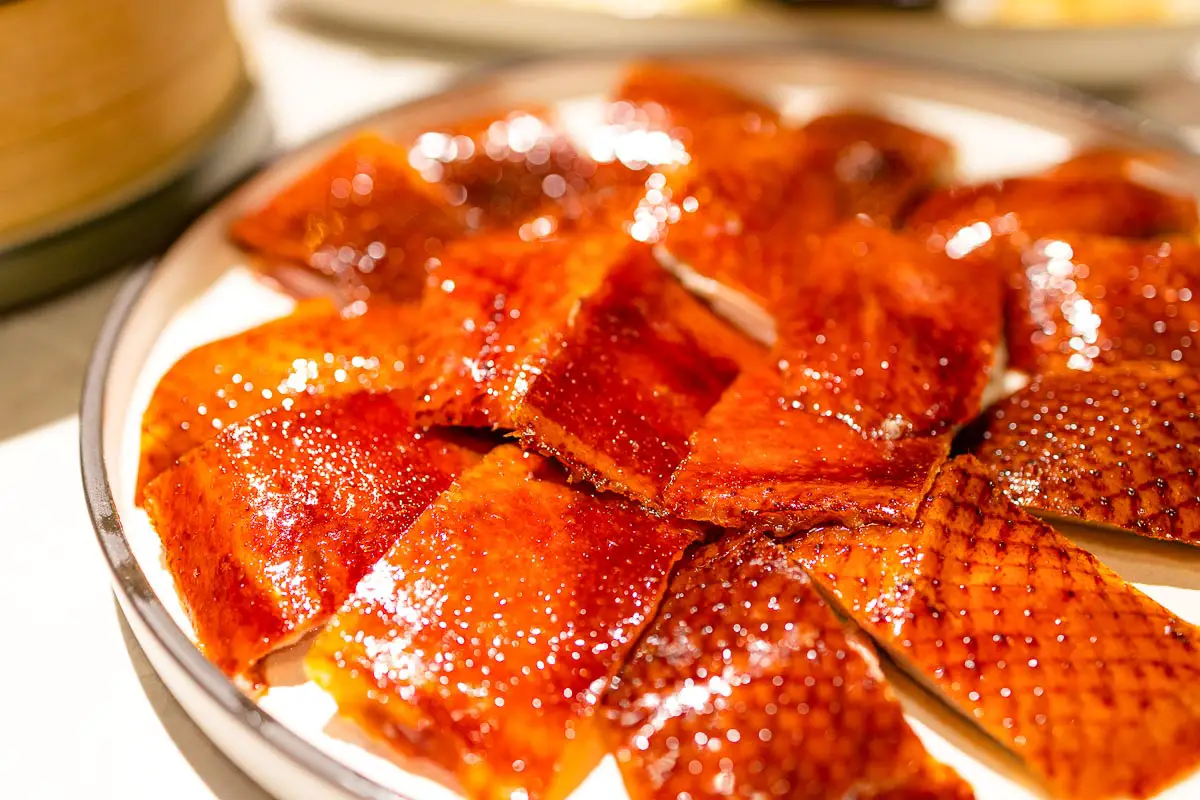
A China trip wouldn’t be complete without eating Peking duck, widely considered China’s national dish, in Beijing.
Just like your dumplings, Peking duck has been around for a long time. Though it may have originated near Shanghai during the 1200s, this roasted duck dish has been closely associated with the capital since it moved to Beijing in 1420.
Initially, the dish was served mainly to the upper classes, and it is said this dish inspired Chinese poets to write poems. Duan Zhu Zhi Ci has a line from one of his poems saying, “Fill your plates with roast duck and suckling pig.”
The authentic way of cooking this savory duck is a bit complicated. The duck used for this dish should be around 45 days old. Air is pumped under the skin to separate the skin from the fat. The duck is then soaked in boiling water, hung to dry, slathered in a marinated sauce, and roasted until you get that crispy skin.
Noodles
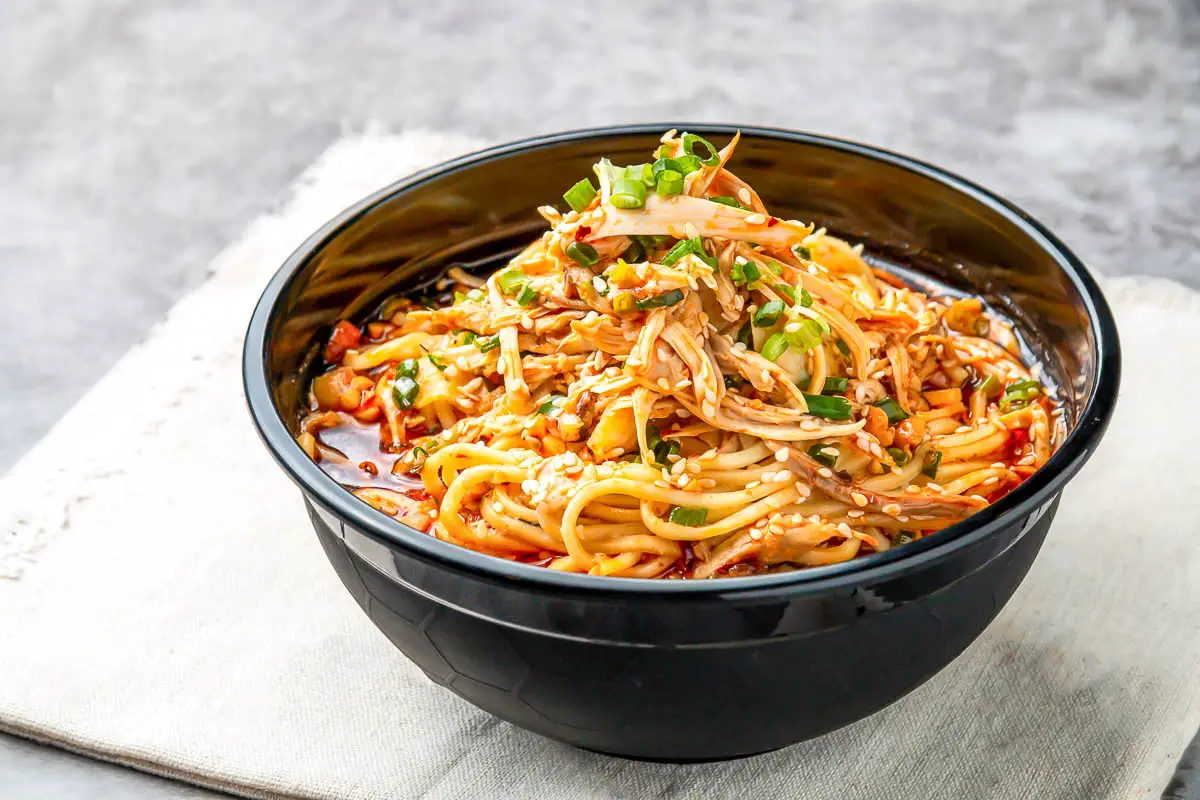
Chow mein is a dish of stir-fried noodles, with chow meaning fried and mein meaning noodles. It is a comforting dish you may order in a Chinese restaurant anywhere that has a Chinese immigrant population.
In China, you’ll find similar stir-fried noodle dishes, like Shanghai fried noodles (cu chao mian) with thick noodles similar to Japanese udon. This stir-fry’s ingredients typically include beef or pork, bok choy, onion, and chives.
Dan dan noodles are another famous noodle dish in China. Originating from Sichuan cuisine, traditional dan dan noodles in Chengdu are topped with mala meat sauce, pickled veggies, peanuts, and spring onions. However, the Hong Kong-style dan dan noodle soup is more commonly found throughout China.
Ways to Experience Authentic Local Foods in China
One of the best ways to eat authentic food in China is by taking a food tour with a local guide. Taste Cantonese dim sum in Hong Kong, slurp up scallion oil noodles in Shanghai, or try hot pot in Beijing!
If you enjoy cooking, learn to make authentic Sichuan dishes during a local market tour and cooking class in Chengdu. You’ll leave with a knowledge of Sichuan spices, recipes to recreate at home, tantalized taste buds, and a full belly.
Conclusion: Best Foods to Eat in China
If you noticed, the famous foods to eat in China that I highly recommend are the dishes that you would typically see on a Chinese restaurant’s menu elsewhere in the world.
Before working in China as a teacher, I had a specific standard set in my mind as to how these foods tasted, based mainly on how they were prepared by the Chinese restaurants elsewhere in the world.
When I was in China and tasted these foods, I was blown away. Nothing beats Chinese food prepared by the locals. I swear that once you have tasted the authentic dishes in China, your taste buds will thank you.
If you would like to learn more about food in China, check out our favorite Chinese cuisine books and cookbooks.
About the Guest Blogger
Dimitris Vlachos taught English as a Second Language in Shanghai. He was also a full-stack marketer at Movinhand, which helps educators get the salary they deserve by supporting teachers worldwide and getting them the best possible offer within 10 days of signing up.
Read More
Save this pin to your China travel or foodie travel board on Pinterest!
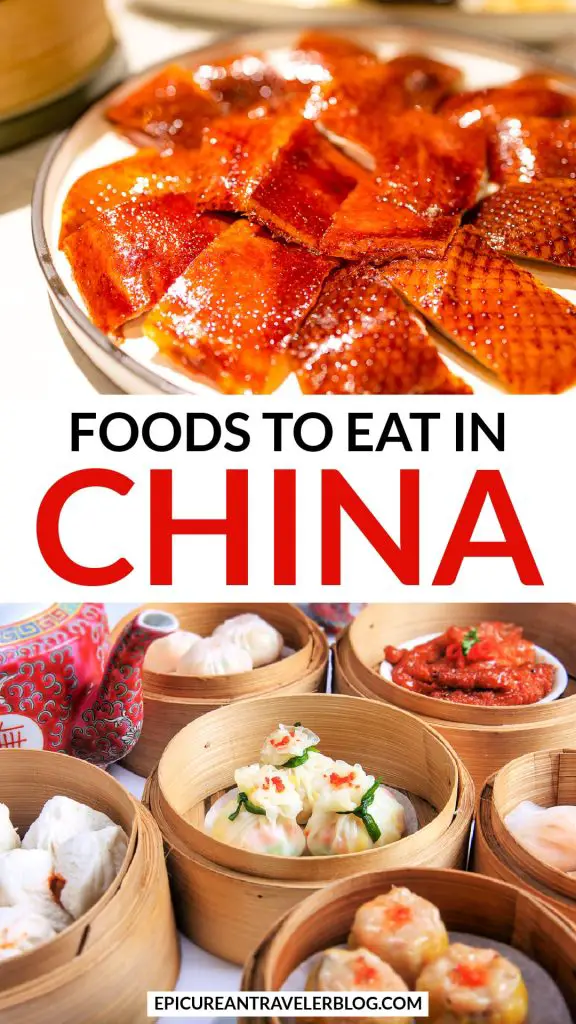
Photo credit: Lead photo of yum cha (© Photosoup/Adobe Stock)







